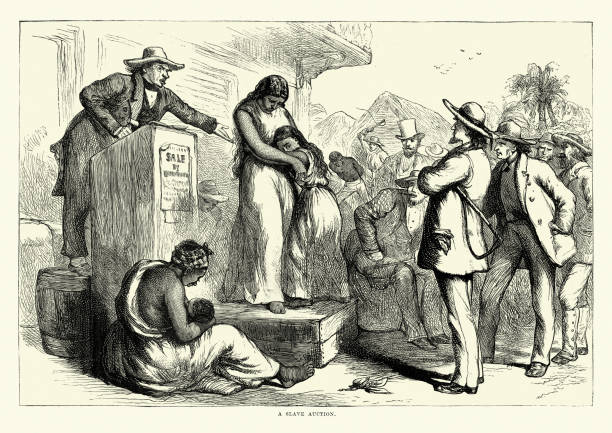Understanding the Reality of Enslaved People in America
The history of slavery in America is a dark chapter that continues to haunt the country to this day. For over two centuries, millions of Africans were forcibly taken from their homes, transported across the Atlantic, and sold as slaves in America. The enslaved people were treated as property, denied their basic human rights, and subjected to brutal forms of punishment. In this article, we will delve into the reality of enslaved people in America, exploring the conditions of their lives, the impact of slavery on their communities, and the legacy of slavery that persists to this day.
Life in Bondage
Enslaved people in America were subject to a harsh and brutal system of oppression. They were stripped of their identities and forced to labor under brutal conditions, often working from dawn to dusk in fields, mines, and factories. Enslaved people were treated as property, bought and sold like commodities. Their owners had complete control over their lives, and the enslaved had no legal or civil rights.

Enslaved people were often subjected to brutal forms of punishment, including whipping, branding, and even amputation. The purpose of these punishments was to keep the enslaved in a state of fear and to discourage rebellion. Enslaved people were also subject to sexual exploitation, with women and girls particularly vulnerable to abuse.
The living conditions of enslaved people were often squalid and overcrowded. They were crammed into small, poorly ventilated cabins with little or no privacy. They were given meager rations of food and clothing, with little regard for their health or well-being. The disease was rampant, and medical care was minimal at best. Enslaved people were often forced to work through illness and injury, and many died from preventable diseases.
Community and Resistance
Despite the brutal conditions of their lives, enslaved people in America were not passive victims. They formed strong communities, often based on shared cultural and linguistic traditions. They created music, dance, and storytelling traditions that helped them to maintain their dignity and their humanity. They also formed underground networks of communication and support, helping one another to resist their oppressors.

Enslaved people also engaged in various forms of resistance, from subtle acts of sabotage to open rebellion. They would break tools, slow down their work, and steal supplies. They would also engage in more overt forms of resistance, such as escaping or staging uprisings. While these acts of resistance often came at great personal risk, they helped to undermine the system of slavery and to lay the groundwork for its eventual abolition.
Legacy of Slavery
The legacy of slavery in America is far-reaching and complex. The economic, social, and political systems of the country were built on the backs of enslaved people. The profits of the slave trade and the labor of enslaved people helped to fuel the Industrial Revolution and to build the infrastructure of the country. The legacy of slavery also had profound impacts on the social and political structures of the country. The institution of slavery helped to create a rigid racial hierarchy that continues to shape American society to this day.
The legacy of slavery is also evident in the ongoing struggles of black Americans. The Jim Crow laws, segregation, and systemic discrimination that followed the abolition of slavery helped to reinforce the social and economic marginalization of black Americans. While progress has been made in the fight for civil rights, the legacy of slavery continues to impact the lives of black Americans in profound ways.
Conclusion
The reality of enslaved people in America is a sobering reminder of the dark side of human history. The brutality and inhumanity of the system of slavery are something that we must never forget. It is important to remember that the legacy of slavery continues to impact our society today and that the struggle for racial justice is far from over.
It is important to acknowledge that the legacy of slavery is not something that can be easily erased. It will require sustained effort and commitment to overcome the deep-seated racial inequalities that persist in our society. This will require addressing not just the economic and social inequities that affect black Americans, but also the cultural and psychological factors that contribute to racial prejudice and discrimination.
At the same time, it is important to recognize the resilience and strength of enslaved people in America and how they resisted and fought against their oppression. Their stories serve as a powerful reminder of the human capacity for resistance and the pursuit of justice.
To truly understand the reality of enslaved people in America, we must listen to their voices and stories. We must recognize the unique experiences and perspectives of enslaved people, and work to center their stories in our understanding of American history. This requires a re-evaluation of the way that we teach and learn about American history and a commitment to uplifting the voices of those who have been marginalized and silenced.
